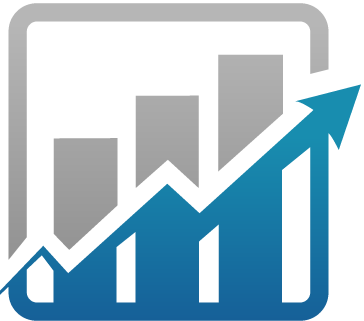How data analytics is being used to improve R&D in Pharmaceutical industry?
November 06, 2017
After making its mark on various industries, data analytics has now entered pharmaceuticals to make the already billion dollar industry, even bigger. Research proves that out of every 10000 compound experimented; only one compound comes out in the market as an approved drug. Also, it takes around 7-10 years and approximately $500 million to develop each new drug. The problem doesn’t end here, out of every 20 drugs approved; only 3 make enough revenue to cover the cost of developing it. Even after being a billion dollar industry, these major shortcomings are causing a hefty loss to it.
Benefits of bringing Data Analytics:
By bringing data analytics to the pharmaceutical industry, we are basically putting to use the tons of data already accumulated with years of research in the process of developing a new drug. Apart from putting the huge amounts of data to use, data analytics can also solve some major shortcomings of the industry.
Benefits of bringing Data Analytics:
By bringing data analytics to the pharmaceutical industry, we are basically putting to use the tons of data already accumulated with years of research in the process of developing a new drug. Apart from putting the huge amounts of data to use, data analytics can also solve some major shortcomings of the industry.
- By sequencing the already available data, the diagnosis of any disease can be done much faster and accurately. Also, based on the failures faced in the previous experiment, the same errors can be avoided while experimenting with a new drug hence saving time and funds.
- By knowing the market scenario for a drug like ‘Place of highest demand’, ‘Age group of highest demand’, and ‘Economical status of people needing the drug’, the production and distribution of the drug can be better regulated hence avoiding its shortage or excess in any place.
- By understanding the customers and market well, risk management becomes easy. The predictability of success of failure of a particular drug can also be accurately calculated thus ultimately saving funds spent in hit and trial.
- Various models can be designed on the basis of different data available. These models can be used to predict shortages or other failures that might occur in supply chain.
Ground breaking change:
One of the biggest bottlenecks faced by the pharmaceutical industry is the difference in response by different human bodies to the same drug. A drug designed for treating cancer must be effective on almost every cancer patient. The major amount of fund allotted for research of a drug is spent on finding out the compound that works on major percentage of the patients suffering from that ailment. Using the analysis of data from various different researches, the probability of success of a particular drug will certainly go up. The trick here is not only analysing data from research facilities but also from various public and private hospitals as well as clinics where the exact response of a patient to a particular drug is minutely monitored. These changes will lead to:1. Increased collaboration
2. Predictive analysis
3. Most effective drug trials
4. Targeted marketing and sales5. Better patient follow-ups
Future Enhancement:·
Clinical Trials – Patients could be specially identified for clinical trials. The identification of a patient would not only be done on the basis of their medical history but also their social media profile and other places. Using data from places that would speak more about the lifestyle of the person rather than only their medical profile.
2. Predictive analysis
3. Most effective drug trials
4. Targeted marketing and sales5. Better patient follow-ups
Future Enhancement:·
Clinical Trials – Patients could be specially identified for clinical trials. The identification of a patient would not only be done on the basis of their medical history but also their social media profile and other places. Using data from places that would speak more about the lifestyle of the person rather than only their medical profile.
Integration of data – Starting from the developmental stage of a drug to its real world use, everything can be documented electronically on a single platform. This is a huge step with regard to the pharmaceutical industry because this will eliminate the possibility of error to a great extent.
Auto generated reports – If integration of data on a large scale is made possible, many softwares can then be designed to generate reports in seconds that currently take years to be prepared. These reports will reduce the time taken for a compound to become a certified drug and hence increase its value.
Collaboration of internal and external teams – Because of the risk inherent in the development of a drug, the research and development in pharmaceutical companies is done with utmost secrecy. This leads to very little or no communication between the R and D team and the marketing team. With the arrival of data analytics, the R and D team can now work with the data compiled on the basis of market surveys which will thus help them in conducting their research better.
The scope for using data analysis to improve research and development in the pharmaceutical industry are endless. Apart from enabling the researchers to save time and work faster, it also mitigates the risk factor to a great extent. The analysis of data has begun in several companies, but for it to give any substantial result, the participation and integration of all stages of drug is mandatory. By making the research electronically efficient, faster communication and better performance is guaranteed.

Contact us
Coventry, UK
support@a-leap.com
support@a-leap.com
Copyright © 2025 www.a-leap.com. All rights reserved
